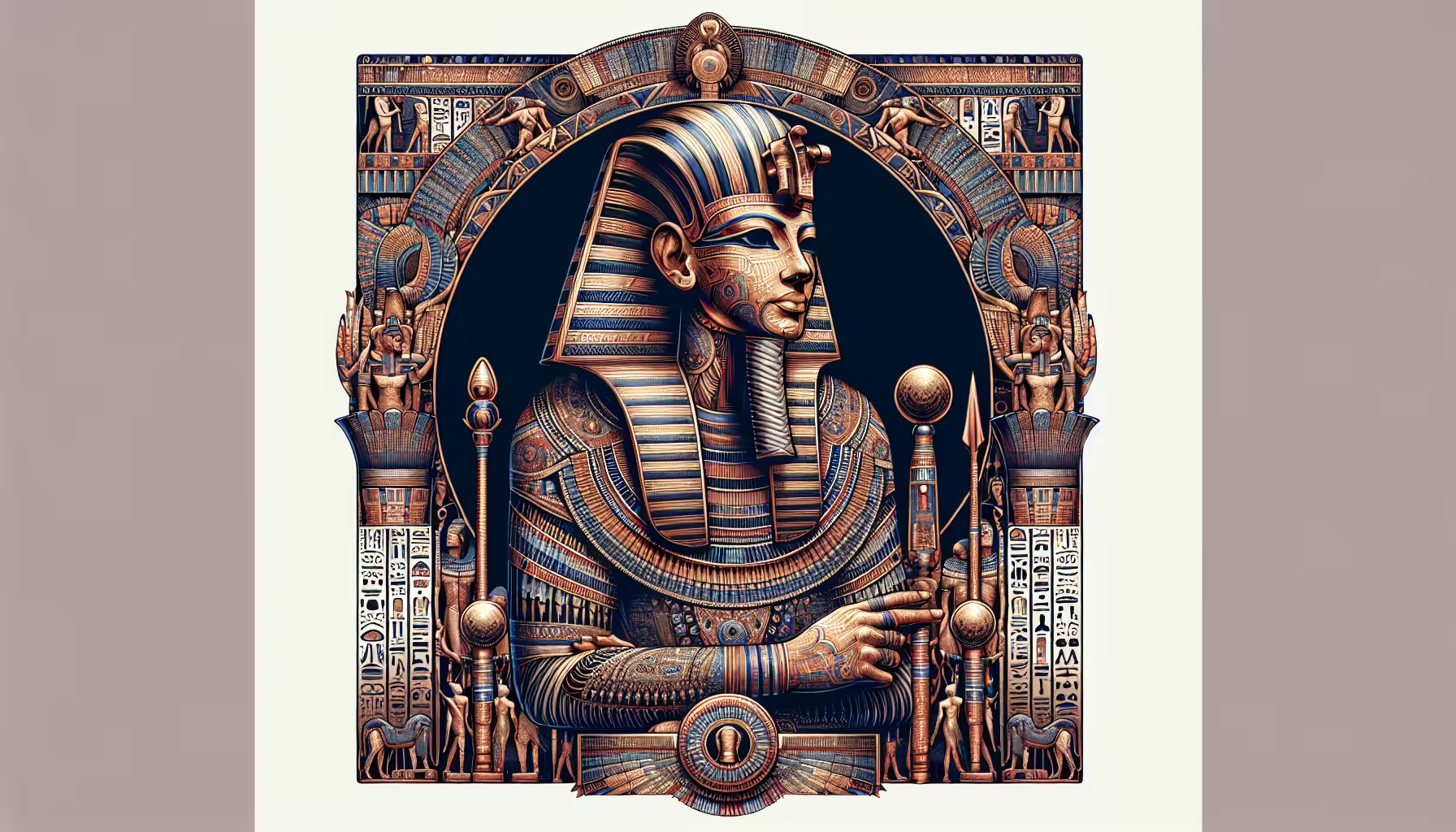
Amenhotep III was an ancient Egyptian pharaoh who reigned during the 18th dynasty and is known for his extensive building projects and monuments. One of the most significant among these is the Colossi of Memnon, two massive statues of Amenhotep III that have stood in the Theban necropolis for over 3,000 years. The Colossi of Memnon are considered legendary due to their size, craftsmanship, and the enduring mystery of their construction. Their significance lies in their representation of the power and grandeur of Amenhotep III’s reign, as well as their continued presence as a symbol of ancient
Introduction
Imagine being transported back in time to ancient Egypt, a land of grandeur and splendor. In the 14th century BCE, during the reign of the powerful pharaoh Amenhotep III, a monumental undertaking was commissioned that would leave a lasting mark on history – the Colossi of Memnon. Amenhotep III was a significant figure in Egyptian history, known for his opulent reign and numerous construction projects. The Colossi of Memnon, a pair of massive stone statues depicting the pharaoh seated on his throne, were built to guard the entrance of his mortuary temple on the west bank of the Nile. Their construction was a testament to Amenhotep III’s power and authority, as well as his dedication to immortalizing himself through magnificent works of art and architecture. The significance of the Colossi of Memnon extends beyond their impressive size and craftsmanship. They have continued to captivate and intrigue visitors and scholars alike for centuries, with their mysterious singing sound at dawn that was attributed to the statue of Memnon “singing” in response to the first light of day. This phenomenon drew pilgrims from far and wide to witness the otherworldly event, further adding to the allure and mystique of the colossal statues. The Colossi
Amenhotep III, an ancient Egyptian pharaoh who reigned from 1386 to 1349 BC, commissioned the Colossi of Memnon during his reign. These two massive statues, each standing 18 meters tall, were built to guard the entrance of his mortuary temple in Thebes.
The Rise of Amenhotep III, A Visionary Pharaoh
It was during the illustrious reign of Amenhotep III, a visionary and powerful pharaoh, that the Colossi of Memnon were commissioned. Amenhotep III ascended to the throne at a young age, inheriting a prosperous and stable kingdom from his father Thutmose IV. Under his rule, Egypt experienced a period of dazzling cultural and artistic achievements, as he was a patron of the arts and architecture. His reign saw the construction of grand temples, sprawling palaces, and monuments, including the magnificent Colossi of Memnon, which stood as a testament to his leadership and the extraordinary power of the Egyptian civilization.
Colossi of Memnon: An Imposing Tribute to a Pharaoh’s Legacy
The Colossi of Memnon stand as a striking tribute to the legacy of Amenhotep III. These colossal statues, each measuring over 60 feet in height, were erected in front of the pharaoh’s mortuary temple on the west bank of the Nile in Thebes. Carved from single blocks of quartzite, the statues depict Amenhotep III in a seated position, adorned with the traditional regal attire and symbols of power. The construction of the Colossi of Memnon was a colossal undertaking, showcasing the exceptional craftsmanship and engineering prowess of the ancient Egyptians.
Legacy of Amenhotep III: The Enduring Symbolism of the Colossi
The Colossi of Memnon have stood the test of time, enduring the ravages of nature and human interventions to this day. Despite the degradation suffered by these monumental statues, they continue to exude an aura of grandeur and mystique, drawing innumerable visitors and scholars to their awe-inspiring presence. The Colossi of Memnon serve as a poignant reminder of Amenhotep III’s unparalleled reign, his enduring impact on Egyptian history and his enduring legacy as a visionary pharaoh who left an indelible mark on the world through his monumental architectural achievements.
Did you know that Amenhotep III, an ancient Egyptian pharaoh, commissioned the construction of the Colossi of Memnon in the 14th century BCE? These massive statues, portraying Amenhotep III seated on a throne, were erected on the west bank of the Nile near the city of Thebes. The purpose of the statues was to act as guardians of the pharaoh’s mortuary temple. Interestingly, the statues were carved from a single piece of quartzite and stood at a towering 60 feet in height. Over time, the statues became famous for producing musical sounds at dawn due to a phenomenon caused by rising temperatures
Read more:
amenhotep-iii-the-magnificent-pharaoh-from-thebesamenhotep-iii-scholar-warrior-renaissance-king
ancient-marvel-amenhotep-iiis-mortuary-temple
amenhotep-iii-signs-peace-treaty-with-hittites
the-golden-age-of-amenhotep-iii